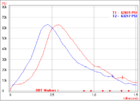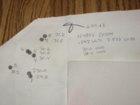GSPV
A failure to plan is a plan for failure.
Close.Positive compensation (snip)
It's based on a load's velocity spread versus muzzle angle on exit.
The bullet goes where the muzzle points when it exits. Period.
Velocity, which we measure after the bullet’s exit is just a handy stand in for bullet exit.
I never said that it did...Not a load's average velocity that changes average POI change.
I’ve gone out of my way to emphasize that it is where the muzzle is pointed when the bullet exits that matters. Velocity is just a stand-in for the exit time. That is, if velocity is noticeably greater, we assume that the bullet exited quicker.
It only takes a few *tenths* of a grain to see the effect on paper.
And, I assure you, everyone that shoots a 6 PPC or similar at 100-200 yard benchrest understands this and knows that they have to change their powder charge as the day warms up.













